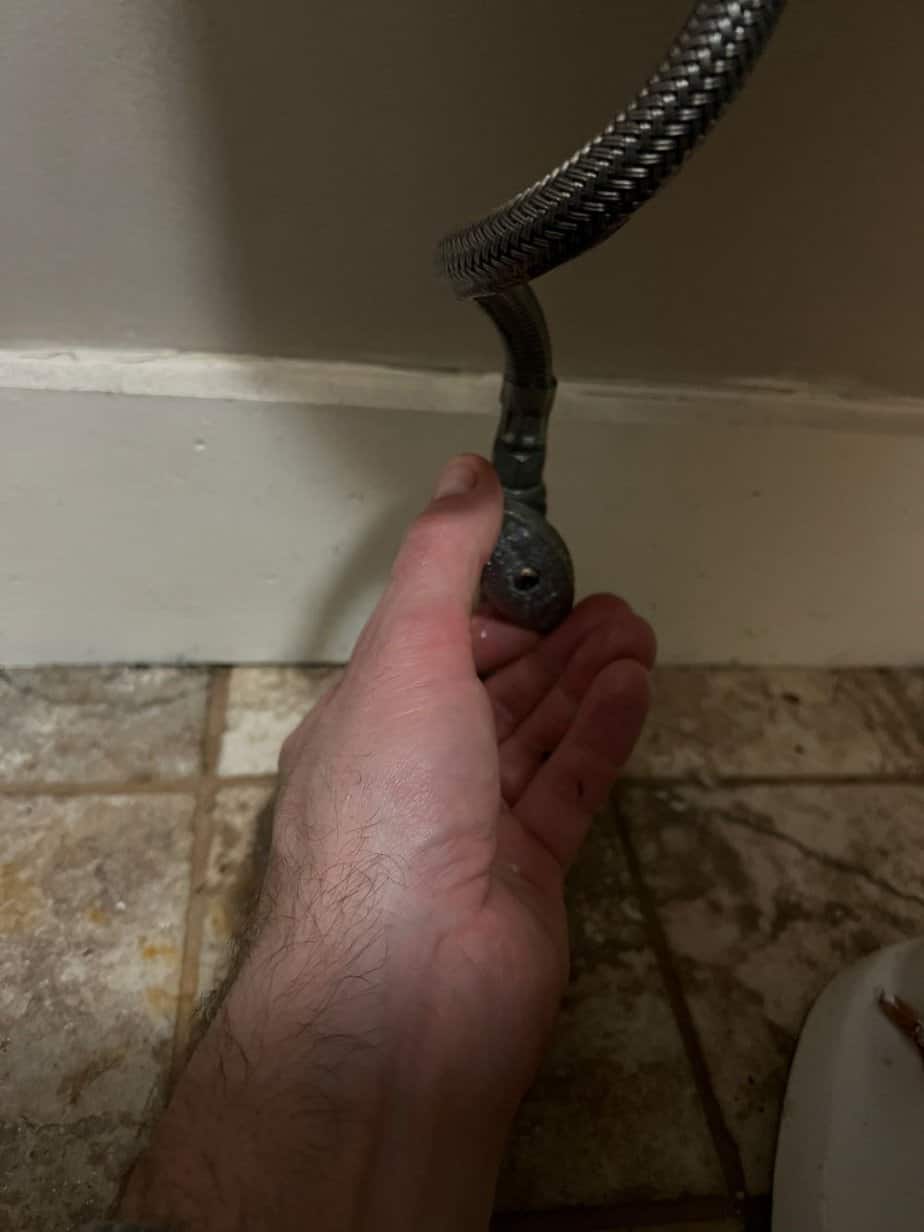What You Need To Know Before Replacing A Toilet In Your Home
If your toilet is backed up, having frequent clogs, or it just doesn’t seem to work well, it might be time for a replacement. But before you head to the store and pick out a new one, there are a few things you need to know.
Aside from just the replacement cost, there are other factors like water usage and flushing power must be considered. If you’re ready for a home improvement project, and to get your hands dirty by completing this project yourself, you’re in the right place.
In this guide, I will explain everything you must know before replacing a toilet seat in your home, along with some practical advice.
From picking the right replacement toilet to understanding the installation process, I’ll cover all the basics so that you can feel confident about tackling this project. So read on for some essential information to help your next plumbing project go smoothly.

Steps To Removing And Installing A New Toilet
Removing and installing a toilet involves several steps and requires careful handling. Through this article, I will help you through the process:
Tools and Materials Needed:
Removing the Old Toilet:

1. Turn off the water supply: Locate the shut-off valve near the toilet base and turn it clockwise to shut off the water
2. Drain the tank: Flush the toilet to remove as much water as possible from inside of the Use an old towel or paper towels to soak up any remaining water in the tank and bowl. Place a towel or old rags on the floor to catch any water during the removal process.
3. Disconnect the water supply line: Use an adjustable wrench or channel locks to loosen and disconnect the water supply line from the bottom of the toilet Have a bucket or container ready to catch any residual water that may spill out.

4. Remove the tank: Locate the tank bolts securing the tank to the bowl. Typically, these bolts are covered by plastic caps or covers that can be pried off with a screwdriver. Unscrew the nuts from the tank bolts and carefully lift the tank away from the Set the tank aside.
5. Remove the toilet bowl: Locate the nuts and washers securing the toilet bowl to the Remove these nuts and carefully lift the toilet bowl straight up to detach it from the closet flange. It may require some rocking motion to break the seal. Once detached, place the toilet bowl on a towel or old rags.

6. Clean the flange and remove the wax ring: Scrape off any old wax or residue from the closet flange using a putty knife or Remove the old wax ring or toilet gasket and discard it. Ensure the flange is clean and free of debris.
Installing the New Toilet:

1. Install the new wax ring or toilet gasket: Place a new wax ring or toilet gasket onto the closet flange, ensuring it is centered and properly
2. Position the toilet bowl: Carefully lower the new toilet bowl onto the wax ring or gasket, aligning the holes in the base with the closet bolts on the flange. Apply downward pressure to compress the wax ring.

3. Secure the toilet bowl: Install the washers and nuts onto the closet bolts and hand-tighten them. Use an adjustable wrench or channel locks to further tighten the nuts, alternating sides to ensure even pressure. Be cautious not to over-tighten and crack the toilet bowl.
4. Install the tank: Place a new tank-to-bowl gasket onto the bowl’s underside. Align the tank over the bowl and insert tank bolts through the mounting Install washers and nuts onto the bolts, tightening them securely.
5. Connect the water supply line: Reconnect the water supply line to the fill valve on the bottom of the Hand-tighten the connection, then give it an extra quarter-turn with an adjustable wrench or channel locks.

6. Turn on the water supply: Slowly turn on the water supply valve to refill the Check for any leaks around the connections and tighten as necessary.
7. Test the toilet: Flush the toilet to ensure proper flushing and that there are no leaks at the base or tank connections. Make any necessary adjustments if the water level or flush is not
8. Secure the toilet: If desired, install toilet bowl caps or covers over the closet bolts. You can also apply a bead of caulk around base of toilet.

Looking for more bathroom DIY’s? Checkout this post on removing old sticky tiles with only two tools!
How Much Does It Cost To Remove And Install A New Toilet?
The toilet installation costs depends on several factors. From labor costs of hiring a licensed plumber to the toilet replacement fee, here’s a quick look at the costs you could be expecting:
- Decide what type of toilet you The cost of the toilet will vary depending on what model you choose. There are three main types of toilets: gravity toilets, pressure-assisted toilets, and dual-flush toilets. Gravity toilets are the most common type, costing between $100 and $200. Pressure-assisted toilets are less common but generally more expensive, costing between $200 and $500. Dual-flush toilets are the most efficient but also the most expensive, costing between $500 and $1000.
- Next step, consider the complexity of the installation. If you’re hiring a professional plumber to do the work for you, they will charge an hourly rate for their services. The average cost for handyman services is around $50 an hour, but it can vary depending on where you live. In addition to the hourly rate, some professionals may charge a flat fee for the project. The amount of time it will take to remove and install your new toilet will depend on the type of toilet you choose and the complexity of the
- Finally, factor in the additional costs of any other materials or supplies that might be required for the This could include new bolts or gaskets for your toilet or a new wax ring to seal the connection between your toilet and the sewer line. These supplies can typically be purchased at your local hardware store for around $25.
Do All Toilets Fit The Same?

Though all toilets may appear similar, they come in various models, each with unique features.
There are plenty of options and it can be difficult to choose what toilet would be best for you. For example, some toilets have a larger bowl, while others have a higher flush.
Likewise, some toilets have a smaller diameter flush valve, saving water (and money on your water bill). And of course, there are also the ever-popular toilets with a bidet function.
There are also one-piece toilet and two-piece toilets to consider. With so many options, you must do your research to find the perfect toilet for your home.
How Much Should A New Toilet Cost?
The cost of a new toilet can vary depending on several factors, including the brand, model, features, and where you purchase it.
On average, the price range for a standard, basic toilet can start from around $100 and go up to $500 or more for high-end models.
However, it’s important to note that additional costs may be involved, such as installation fees, parts, and any necessary plumbing modifications.
Here are some general guidelines for toilet pricing based on the types of toilets available:
In addition to the cost of the toilet itself, it’s important to consider installation costs. If you’re not comfortable with DIY installation, hiring a professional plumber to install the toilet may involve additional fees.
When shopping for a new toilet, it’s recommended to compare prices from different retailers or online stores to find the best deals.
Additionally, consider the long-term benefits of water-saving features, as they can contribute to reducing water usage and potentially lower your utility bills over time.
Ultimately, the cost of a new toilet will depend on your specific preferences and needs. It’s a good idea to establish a budget and research different models to find a toilet that fits your requirements within your price range.
How Often Should A Toilet Be Replaced?

Most people don’t give much thought to their toilets, but the fact is that they are an essential part of the home. Not only are they important for hygiene, but they also play a role in water conservation. As such, it’s important to keep them in good working order. But how often should a toilet be replaced?
The answer may surprise you. According to experts, the average toilet can last up to 50 years with proper care and maintenance.
However, that doesn’t mean you should wait that long to replace your toilet. If your existing toilet is more than 20 years old, it may be a good idea to start thinking about replacing it. Not only will a new toilet be more efficient, but it will also be easier to clean and maintain.
So, if you’re wondering how often you should replace your older toilets, the answer is every 20 to 50 years.
Of course, this will vary depending on how well you take care of your toilet and how often you use it. But as long as you keep an eye on it, your toilet should stay in good shape and last many years.
Can I Replace The Toilet Myself?
Changing a toilet is surely a messy task that is best left to the professionals. However, with a little knowledge and the right tools, it can be a relatively easy do-it-yourself project.
The first thing you need to do is turn off the water supply to the toilet. Then, flush the toilet to empty the tank. Next, remove the old bolts that hold the toilet in place and lift it off the floor.
Finally, clean up any remaining residue before installing the new toilet. With a little time and effort, you can easily change your toilet without calling a plumber.
Want to shop this post? Click on an image below to be taken to that product page. **These are affiliate links and if used, I make a small commission at no cost to you. Thanks for supporting the brands that support this blog of mine!
Rounding Up
So, there you have it—a complete guide to installing a new toilet in your home. If you don’t have any experience with such projects, I would strongly recommend having an expert do it. There’s a lot that can go wrong, and it’s just not worth the risk. Thanks for reading, and I hope this guide was helpful!
Be sure to pin for later!

Chat soon!
Kori
Want to read more about updating your home on a budget? Read on below!

